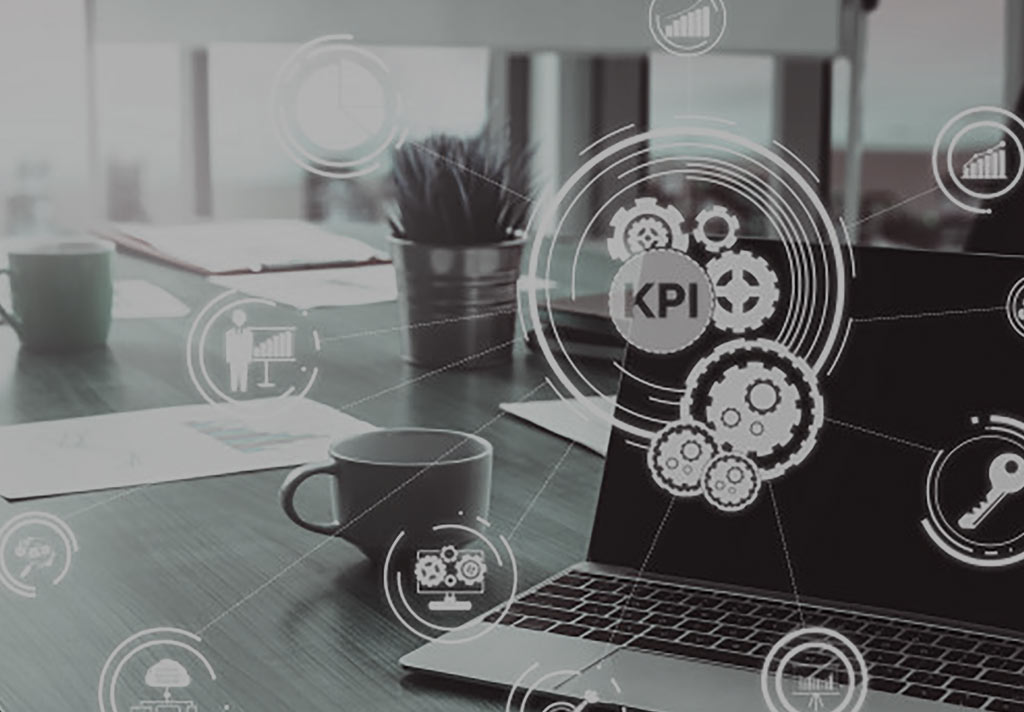Top 10 SEO KPIs for your business
Defining and measuring the top SEO KPIs for your business helps the marketing team to measure websites' organic search results & the top performing keywords.

The process of improving the visibility of a webpage or a website through organic search results is referred to as Search Engine Optimization (SEO).
Defining and measuring the top SEO KPIs for your business is of utmost importance, as they can be used by the marketing team to measure the websites’ organic search results, including the analysis of the top-performing pages, top-performing keywords and areas of your websites that can be optimized for searches.
Defining top SEO KPIs for your business helps marketers in optimizing their SEO endeavors by creating the pieces of content that specifically match with the users’ search intent across omnichannel.
Read more on How Omnichannel Reputation Management Helps in B2B Branding.
Once you define the top SEO KPIs for your business and start to continuously monitor them, you can use the insights to create highly tailored pieces of content for your prospects, as well as, customers.
This will not only improve the users’ experiences but will also help in improving the online credibility of your website as the personalized pieces of content, created in accordance with the intent of the prospects, possess tangibly high quantifiable values, rank higher in the SERPs, witness better engagement and conversions and eventually contribute to a higher reputation and domain authority for your websites.
Read more on How Intent Data Analysis Helps B2B Companies Boost ROI.
Defining the top SEO KPIs for your business assists in assessing the impact of SEO performance in driving traffic on a webpage through processes such as internal or external inbound linking or backlinking and keyword targeting among several other methods.
Measuring the top SEO KPIs for your business leveraging tools such as Google Analytics and Moz helps you in analyzing data about website usage and working continuously to improve your website as an ultimate weapon for optimizing sales conversions.
Below is a list of the top SEO KPIs for your business to bank upon for measuring the success of your SEO and digital marketing endeavors and should be the integral components of your SEO dashboarding:
1. Organic Sessions
Organic searches measure the earned visits to your website through several search engines such as Google, Yahoo, and Bing.
A visitor’s session is defined by a user visiting the website and the series of actions taken by him on the website before making a final exit.
If a user is idle on the website their session is automatically timed out after 30 minutes of inactivity.
A single user is responsible for multiple sessions oftentimes.
Organic traffic can be measured by means of tools such as Google Analytics. Marketers can also integrate the data from analytics with a reporting tool such as Agency Analytics or a data visualization tool such as Tableau.
This equips the marketers better to cross-reference to other data points as well as visualize the data more conveniently.
Growth in organic traffic is amongst the most encouraging signs for marketers. If you are using SEO KPIs for your business, a spike in the organic traffic implies that the core objective of your SEO efforts is getting fulfilled and that more people are visiting your website.
If your brand name and products are being searched more, it means that your digital marketing and Search Engine Optimization (SEO) has majorly contributed to branding.
As your on-page and off-page optimization endeavors improve, your keyword rankings will improve, the ones that you plan to target, as well as, the ones you were oblivious about.
As your pages rank higher on the Search Engine Result Pages (SERPs), based on the number of visits and the engagement there’s a significant improvement in the organic Click-through-rate (CTR) as well.
The number of organic sessions in general, grow as a result of both digital and traditional on-page and off-page SEO campaign marketing endeavors. As such, leveraging the top SEO KPIs for your business help you grow the number of organic sessions for your website, as well as help in devising ways to improve user engagement and session time. The improvement in user-engagement usually bears a direct correlation with the number of conversions being materialized on your website.
2. The Keyword Opportunity
The Keyword Opportunity KPI analyzes the probability of improvement in search rankings by comparing the current rankings on Search Engine Result Pages (SERPs) to the estimated search traffic volume analyzed by Google and by competitive benchmarking.
Read more on How to Assimilate Competitive Benchmarking in Social Media.
If you are a marketer leveraging the top SEO KPIs for your business, the keyword traffic estimator by Google allows you to see through the opportunities, assess the efforts required to rank for the most vital keywords and gain insights into the current performance of your targeted keywords.
With the help of the keyword estimator KPI, marketers can determine their share of traffic. However, the estimates by Google can vary depending upon your actual traffic volume and that calls for the utilization of multiple data points including Google’s webmaster tools and impression data gathered from multiple AdWord campaigns being executed. The keyword opportunity KPI can be added to your SEO dashboard.
To monitor the keyword opportunity in real-time, you can consider coupling up the Keyword Opportunity KPI with related web metrics such as keyword performance to gain a complete view of the company’s digital marketing performance.
3. Leads to Conversions Ratio
If you are a marketer using the top SEO KPIs for your business, one of your prime goals is monitoring what your leads do once they land on to your website. The end goal for you as marketers using SEO KPIs for your business is to generate leads that will convert to sales.
Monitoring the number of conversions generated against the total number of unique website visitors gives the marketers a glimpse of whether quality traffic is coming on their websites or not.
Conversions are usually measured differently by different marketers. Conversions on a website are usually aligned to the desired set of actions that the marketers want their visitors to perform including activities such as newsletter signups, contact form submission requesting more information, phone call, registration for a webinar, & completed purchase.
For those who set up goals and events in Google Analytics, leads can be tracked across a variety of dimensions including:
- Seeking the devise platforms generating higher conversions, whether mobile or desktops
- The people who visit the website more, whether men or women
- The webpages that drive the highest number of leads
To optimize the conversion rates marketers can determine their funnel goals to figure out where the people drop off in the conversion process and can accordingly make improvements in their websites to optimize the conversions.
An increase in the total number of conversions means that not only the marketers can draw more visitors to the website but also the visitors are completing desired actions required to amplify the conversions.
The leads to conversions ratio is an important KPI for marketers as it allows them to improve the results aligned with the core business objectives and grow their customer base to improve sales conversions.
For improving the leads to conversions ratio marketers should focus on taking adequate steps to optimize the conversion rates (CRO) and the users’ experience (UX):
- They should inspect if their website is easy to navigate and if it looks and feels are optimized
- The call-to-action buttons designed should be unambiguous and clear
- The pieces of content being marketed should be trustworthy and persuasive
- The users should be able to move through the conversion funnels easily without encountering many problems along the way
4. Click-Through-Rate (CTR)
If you are a marketer looking forward to using SEO KPIs for your business, the Click-Through-Rate (CTR) is an important KPI to set the eyes on. The CTR metrics allow marketers to measure how often they can leverage their targeted keyword listings on the SERPs to generate clicks against the total number of times the impressions were served across the diverse platforms on the web.
The CTR rates are an indicator of how effective your keyword listings or impressions are at generating clicks. The CTR KPI is often paired with another important web analytics metric called Goal Completion Rate (GCR).
While the Click-Through-Rate (CTR) is the number of clicks compared to the total number of search impressions, a goal is a marketing objective for your audience to complete such as a subscription to an email list.
Completion Rate is derived by dividing the total number of web visitors by the total number of goals completed.
The total number of visitors that discover your website by entering a keyword in the search engine and then clicking on your website listings appearing thereafter, gives the total organic traffic on the website.
A high Click-Through-Rate (CTR) for a search term and high goal completion are the indicators of success for an SEO campaign being executed.
For both the search and display Click-Through-Rate (CTR), the industry benchmark given by Google AdWords for B2B businesses shows a CTR of 2.55%.
Adam Audette, SVP of SEO at Merkle, gives the following advice for a high Click-Through-Rate, “Data is helpful for SEOs when creating projections. If you know existing rank positions, search volume, and can estimate new ranking positions, you can create an approximate forecast of the SEO work to help rationalize budgets, resources, and time commitments.”
If you are a marketer using SEO KPIs for your business, who wishes to track their Click-Through-Rate (CTR) in real-time, consider coupling CTR with related web metrics to provide an overview of company’s digital marketing endeavors. Click-Through-Rate (CTR) is often compared alongside the goal completion rate metric on an SEO dashboard.
5. Bounce Rate
If you are measuring the top SEO KPIs for your business, the bounce rate is an important KPI that you can’t afford to ignore. This metric measures the percentage of sessions wherein a unique visitor loads the website but exits soon after without performing any action.
The bounce rate is calculated by dividing the total number of non-interactive sessions by the total number of sessions.
Bounce rate is an important KPI for you if you’re using any of the top SEO KPIs for your business. It helps assess whether your content is engaging enough for the prospects or not. It is a useful KPI for your business. It is important for the search engine algorithms to conclude whether certain pieces of content are engaging enough for the prospects and are able to satisfy the users’ search intents.
When a keyword is searched by a user, Google wants to prioritize the highest quality search results for the users. When the users bounce back from a particular page, it may imply that the ranking of the page is simply not relevant or the page is either frustrating to navigate or isn’t trustworthy.
On the flip side, a website with a lower bounce rate indicates that the website has a content strategy abiding by the principles E-A-T (Expertise, Authoritativeness, and Trustworthiness), as well as its designs and looks captivate the users and its navigation through the website is also hassle-free.
In general, the lower the bounce rate, the better it is for your website. The marketers can routinely start auditing the pages with a high bounce rate and can A/B test different components of the webpages including the look and feel of the pages to see if the bounce rates can be improved.
6. Pageviews
Pageviews are the measure of a total number of views, a particular page has received. If you are using top SEO KPIs for your business assessment and optimization, measuring this KPI gives your team an insight into how compelling and popular a particular page is.
You can keep a record of the pageviews KPIs for over a month, every quarter, as well as on an annual basis and work out your ways to optimize them.
7. Page Load Time
This KPI influences most of the other metrics discussed before. If you are using SEO KPIs for your business, keeping a track record of the page load time becomes extremely important.
The website loading time can impact users’ experience. If a website is pretty slow to load, users are likely to abandon it and return to the Search Engine Result Pages (SERPs).
According to research by Google, 53% of people will leave a mobile page if it takes longer than 3 seconds for the website to load.
People want to start reading an article as soon as it is clicked on and a high website loading time can adversely impact the users’ experience, leading to high bounce rates.
Similarly, in a hypothetical scenario on a B2B eCommerce website, people will abandon their shopping carts if it takes too long for the website to load.
On banking websites too, customers want to pay their bills quickly, and as such a slow website can be a limitation for the customers.
While an ideal website time may vary according to the type of content on your website, if you are tracking the SEO KPIs for your business, you should always think of ways to optimize your website loading time.
8. Average Session Duration
As a marketer tracking the top SEO KPIs for your business upscaling and optimization, the Average Session Duration is yet another important KPI that quantifies the average duration of a visit on your website.
This KPI is also a reflection of the quality of content being published on your website and whether the users find your website structure compelling to engage with and research on.
If your website has a healthy average session duration, you can inspect whether you have engaging and compelling Call-to-Action (CTAs) buttons to convert the leads on your website into customers.
On the other hand, if the average session duration on your website is dwindling, deep-delve into the underlying reasons to track the frustration of your users.
The average session duration KPI clearly demarcates how incentivized the users feel while they stay and research on your website, engage with the different pieces of content, and click deeper into the website architecture.
9. Content Backlog
If you are measuring some of the top SEO KPIs for your business already, chances are that you’re familiar with this Content Backlog KPI. This KPI measures the total pieces of content in waiting in queue to be published live.
Content is the major driver of viewers on your website and as such the more of it gets published, as a part of an orchestrated content strategy, the higher are the chances of drawing more viewers on the website and generating more leads through your system.
The content backlog KPI should be reported at least once in a month to give the marketing managers and content managers a fair glimpse of the resourcefulness of the pieces of content being unleashed to their full potential to drive traffic and leads for the business.
10. Landing Page Performance
If you have been using some of the top SEO KPIs for your business performance analysis you understand that Landing Page Performance is an important KPI and its analysis gives the marketers an insight into the components of the landing pages that lead to sales conversions.
A landing page gets traffic from any other webpage other than the same webpages on your website. Landing pages are often associated with the Pay-Per-Click (PPC) ads like Google AdWords where marketers can drive traffic to a specific URL that has been designed to receive those visitors.
Highly converting landing pages are often hyper-personalized to optimize users’ behaviors and marketers need to frequently A/B test their landing page performance to optimize the conversion rates and decrease the bounce rates.
Read more on SEO Best Practices for Landing Page Optimization (LPO).
Wrapping Things Up
Effective and efficient measurement of the success of the SEO & digital marketing campaigns has been a challenge for marketers across the globe. Reporting the success of your SEO and digital advertising needs to be done in a tangible way be it your higher management or a client. Therefore, as a marketer, it becomes extremely important for you to define, measure, and optimize the top SEO KPIs for your business upscaling and bolstering of the bottom-line revenue.
According to your immediate and long term business objectives, you can choose your own list of SEO KPIs. The list above covers some of the most important SEO KPIs that bear strong interdisciplinary correlations with each other as well as several aspects of your digital marketing and website optimization endeavors and you can consider measuring a few or all from the list above.
Prioritize your SEO KPIs based on their closest resemblance with your business language and report them in a way that is easier for your clients and stakeholders to understand.
Remember that improved search visibility aids overall improved visibility and a greater brand impact.
Valasys Media is a well-renowned name amongst B2B service providers that helps its clients improve their visibility in the market and achieve their desired business and other bottom-line objectives. We understand the requirements of our clients and accordingly deploy our services. We have an array of our services including lead generation, lead nurturing, account-based marketing, list building services, contact building services, content syndication services, event promotion, appointment setting, business intelligence, and CRM services, to help us orchestrate structured methodologies for our clients to optimize their campaigns and realize their revenue goals.



